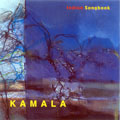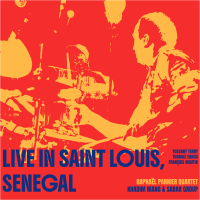Home » Jazz Articles » Profile » Bassist John Ore
Bassist John Ore
A musician should be playing at least two, three to four times a week with other musicians.
Even if things worked out, though, a decent life was not assured. Civic authorities, unions and club owners could guarantee little security, and even less advice on how to manage the perils of a musical life. Today, those youngsters are aging men - gifted masters who have long since paid their dues - and many, especially those with failing health, find themselves victims of past exploitation and failure to plan. One is the accomplished bassist, John Ore.
Born in 1933, Ore grew up surrounded by the hymns and melodies of both classical music and jazz. As a child, he studied cello at the New School of Music in his native Philadelphia (‘43-46), and after moving to New York in 1947, switched to bass. He attended Juilliard in 1952, and almost immediately began to establish himself as a gifted sideman and occasional soloist. Following a brief run with the Lucky Millinder Big Band, Ore caught his first big break with Lester Young in 1954.
From there, Ore embarked on a steady run of gigs alongside some of bebop’s most distinguished pianists. Bud Powell used him regularly throughout the mid ‘50s, and then again on his return from Europe in 1964. Elmo Hope also counted Ore as a favorite accompanist, recording with him at various points during his all too brief career.
But it wasn’t until 1960, when Ore landed a place in the Thelonious Monk Quartet, that the bassist was propelled into the international spotlight. And like all Monk sidemen, it happened quite suddenly. “I met Monk through the Baroness [Pannonica de Koenigswarter],” recalled Ore in a recent phone interview. “He spent a lot of time out at her house. One day, there was a blizzard, and he called me for something like a rehearsal. I went over there, played, and he hired me.”
Just like that.
“Then we went out to the Blackhawk in San Francisco. Billy Higgins was on drums, I forget who was on trumpet [Joe Gordon], and Harold Land was on saxophone with Charlie Rouse.” Riverside boss Orrin Keepnews, recognizing the unique potential of the band, was astute enough to record the engagement and later release it as At The Blackhawk (1960).
For the three years that followed, Ore continued his Monk odyssey on long-winded tours of the United States and Europe, as well as several studio sessions, including those which produced such classic recordings as Monk’s Dream (1962) and Criss-Cross (1962). Then in 1963, his tryst with Monk came to an end, and he returned to the (increasingly tenuous) life of a freelancing musician.
In the decades that followed, work died down a little, but still kept Ore on the move. He toured and recorded with the Earl Hines Orchestra - an experience the bassist cherishes to this day - and also began an on again, off again association with the Sun Ra Arkestra. During the ‘90s, Ore contributed to several well received recordings, including two by saxophonist Cecil Payne - Cerupa (1993) and Scotch & Milk (1996).
More recently, however, gigs have proven harder to find. “I haven’t had much work,” says Ore. “In the last five or six years, I’ve had glaucoma, and that’s cut down on my ability to [find work].” This, paired with a dwindling number of venues currently catering to jazz, has made it more and more challenging for him to perform.
“I don’t get out there to play very often,” Ore laments, “And that’s the main thing. Playing at home all by myself just isn’t the same. A musician should be playing at least two, three to four times a week with other musicians.”
Add to this the absence of proper benefits and pensions plans for veteran musicians, and the road to a relaxed retirement appears muddier by the day. Organizations like the Jazz Foundation of America, whose monthly jam sessions Ore participates in, have worked ceaselessly to ease these unfortunate fiscal woes. Nevertheless, the lack of a substantial safety net for aging artists like Ore continues to be a major problem in jazz.
“Not too long before Elmo Hope died, I saw him on Seventh Avenue. And he was walking in the rain with no hat on, someone else’s shoes, and he was sick. Now I don’t blame that on anyone, but there should be something, someone, somewhere we people can go. There should be resources beyond the Jazz Foundation of America.” In jazz, the past is soon forgotten - by record executives, promoters, critics and fans alike. And without a regular presence on the ever-evolving scene, one can quickly find themselves like Elmo - on the outside looking in.
Tags
PREVIOUS / NEXT
Support All About Jazz
 All About Jazz has been a pillar of jazz since 1995, championing it as an art form and, more importantly, supporting the musicians who make it. Our enduring commitment has made "AAJ" one of the most culturally important websites of its kind, read by hundreds of thousands of fans, musicians and industry figures every month.
All About Jazz has been a pillar of jazz since 1995, championing it as an art form and, more importantly, supporting the musicians who make it. Our enduring commitment has made "AAJ" one of the most culturally important websites of its kind, read by hundreds of thousands of fans, musicians and industry figures every month.






















